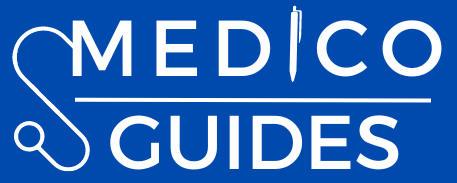Prepared by:
Muhammad Abdul Rehman Wazir (G14)
Compiled by:
Hafiz Muhammad Umair Noor (G12)
Reference Books:
- Lippincott Illustrated Reviews: Biochemistry 8th Edition
- Harper’s Illustrated Biochemistry 30th Edition
- Satyanarayana Biochemistry 6th Edition
Haem Synthesis & Porphyria: (HL-B-001)
- Chap 21 Lippincott
- Do fig 21.3 ,21.4 ,21.5, 21.8 (vvv important)
- Clinical application 21.1(very important)
- Read and memorize the theory.
Globular Proteins: (HL-B-001)
- Chap 3 Lippincott
- Do complete chap as it is important
- Fig 3.6, 3.12, 3.13 (very important)
- Role of 2,3 BPG is very important.
Haemoglobinopathies: (HL-B-002)
- Chap 3 Lippincott
- Pg # 37- 41 (all diseases are very important)
- Among hemoglobinopathies: thalassemia, sickle cell anemia and methemoglobinemia are especially important. While doing disorders, never forget to do their mode of inheritance.
Iron and Vitamins: (HL-B-003)
Chapter 29 (Lippincott) (Page 450 and 451 for iron)
- Hemosiderosis and hemochromatosis are disorders of iron metabolism. You can skim through these from YouTube. (Since mod sys is all about clinical relevance, you cannot risk any clinically relevant stuff)
Chapter 28 (Lippincott) (Vitamin B6, B9, B12 and C)
- Do all the diseases which may result from vit deficiency. Also you should know what labs are required to diagnose any particular vit deficiency. e.g.
- Schilling test for B12
- Patient with B9 deficiency presents with high FIGLU in urine.
Haem Degradation: (HL-B-004)
- Chap 21 Lippincott
- Fig 21.9 and 21.10 is (very important) along with its theory
Jaundice/ Hyperbilirubinemia: (HL-B-005)
- Do Hyperbilirubinemia / Jaundice & Types of Jaundice from Lippincott chap 21 pg # 316
- Difference between Types of Jaundice based on Lab Investigations
- Genetic basis of Jaundice, including:
- Crigler Najjar Type 1
- Crigler Najjar Type 2
- Dubin-Johnson Syndrome
- Gilbert Syndrome
- Rotor Syndrome
- This is Dr Najeeb’s lecture which covers all the aspects of this LO. You can make your own lecture notes and get done with this topic for good. Also, this lecture is very extensive (a drawback of Dr Najeeb’s lecs) and there will be terms you may not be familiar with. You don’t need to get stuck with such nuances, just stay focused on your LOs.
- Another option is osmosis videos which you can check for all the syndromes mentioned above.
Plasma Proteins: (HL-B-006)
- Same as F-B-013 of Foundation Module
Immunoglobulins: (HL-B-007)
- Same as F-B-014 of Foundation Module
Single Gene Defect: (HL-B-008)
- Do Pedigree of single gene defects from the pictures given below:



